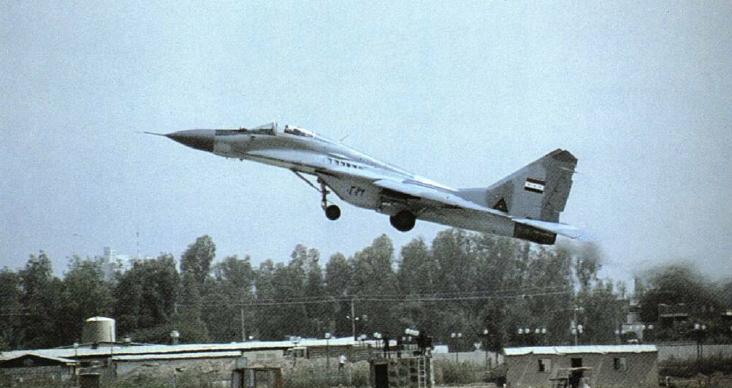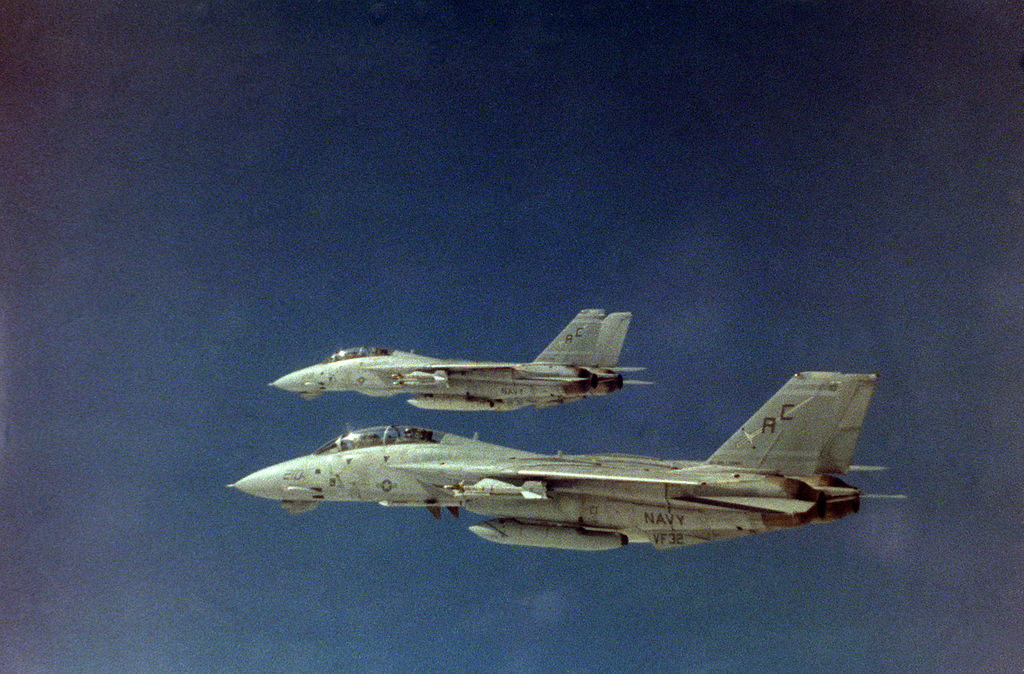The US Navy F-14 Tomcats won the air battle for H-2 without firing a single shot.
The F-14 Tomcats of the US Navy achieved their first aerial victories during freedom of navigation exercises off Libya in 1981. However, the period during which they saw most combat followed several years later, during Operations Earnest Will and then Desert Storm, from 1987 until 1991.
Indeed, the widespread belief is that USN F-14s saw next to no air combat against Iran, and even less so during Operation Desert Storm in 1991. Instead as explained by Tom Cooper in his book In the Claws of the Tomcat: US Navy F-14 Tomcats in Air Combat against Iran and Iraq, 1987-2000, the reality is entirely different: Tomcats engaged dozens of opponents, often on the verge of the engagement envelope of their powerful AWG- 9 radars and AIM-54 Phoenix long-range air-to-air missiles, and sometimes at such close ranges that their pilots selected ‘guns’. Weather and communications-related problems, and the incredible discipline of their crews prevented them from scoring up to a dozen aerial victories, several of which could have been scored on Jan. 17, 1991.
The US Navy’s `delay and disrupt’ fighter doctrine (which taught to all F-14 crews was to stay with the strike package with fighter bombers, electronic warfare, and other aircraft they were supposed to protect-to ‘delay and disrupt’ instead of ‘chasing MiGs’) played a crucial role in the engagement of that morning: although resulting in a literal ‘bunch of soft kills’, but flew no missile exchanges, it can be said that this turned into a major power demonstration for the Tomcat. The action began when USS data Kennedy and USS Saratoga launched a combined operation to strike the Air Defence Operation Centre (ADOC) at al-Wallid AB (H-3), and bomb Sa’ad AB (H-2), early in the morning of Jan. 17.
The first into the target zone were four F-14As led by CDR Bob `Sundance’ Davis, CO VF-32. Eight additional Tomcats escorted eight A-6Es (some armed with HARMs), four A-7Es, and three EA-6Bs. At that point in time, the E-2 controller announced four groups of ‘bogeys’ — a total of at least 12 Iraqi interceptors airborne — near to Sa’ad AB, but did not declare them as enemy, prompting one of the Tomcat pilots into thinking ‘…who would be CAPping over the bad airfield on day one of the war?’

As the Navy formation crossed the border, Davis’s Tomcats acquired the nearest enemy flight — four MiG-29s — with their AWG-9s. By the way, the Iraqis flew their orbits, it was clear they were versed in countering F-14s and denying them long-range Phoenix shots. Of course, the ROEs negated that option anyway.
Davis took no chances, though, and his formation spiked the Iraqis with its AWG-9s in PDSTT-mode. The Iraqis reacted promptly: one division headed southwest along a desert highway for H-3, the others turned in the northern and north-eastern directions. The only one to apparently think about engaging the incoming Navy formation was a single MiG-25 pilot that — while underway at 12,192m (40,000ft) and Mach 1.2 — turned right in the direction of one of the approaching EA-6Bs that was meanwhile emitting its jamming. Rather unsurprisingly considering the power of t ‘music’ emitted by the Prowler, the Iraqi failed to achieve a lock-on and gave up, turning away to follow the others that were distant towards the north. Just to make sure, Davis then split his division and sent two Tomcats after the four MiGs that ran away in t south-western direction. The Tomcats thus won the air battle for H-2 without firing a single shot.

Underway as a RIO on F-14A 160397/AC204, piloted by LCDR Drew Brugal, was LCDR Dave ‘Hey Joe’ Parsons, the overall mission commander for this operation. That and the Tomcat crewed by LT ‘Voodoo’ Voors and LT ‘BUNO’ Washington (which suffered a failure of the instrumental navigation system during this mission) flew as high-value unit (HVU) escort: both were thus in the rear of the formation, but following the action ahead of them with help of the fighter-fighter datalink. With Iraqi interceptors out of the way, the strike went well and all of the involved fighter-bombers emerged undamaged for the flight back home. Parsons recalled what happened next:
‘…we were doctrinal bound to stay with the Prowlers, not turn away from them. The Prowlers were heading south back to Saudi Arabia when the AWACS started giving us calls that the MiGs that had retired north of target had reversed course and were trying to run us down from behind after strike package had proceeded south…. Topgun preached our primary mission was to “delay and disrupt” attempts by enemy interceptors to target our HVU, not to charge after MiGs and thus expose our assigned HVU. Thus we decided to stay with the Prowlers until they were safely out of the area, or the MiGs got too close, and then to detach the rear two Tomcats to deal with MiGs, leaving the other two to escort the Prowlers…I was telling the Prowlers to ‘buster’ — accelerate to maximum speed — so we could engage sooner, but they did not hear us because of the power of the jamming they emitted… We were about to cross-turn and engage them, when I detected two F-15s coming north on a reverse heading, out of Saudi Arabia, already supersonic and obviously vectored onto the MiGs. So, we watched them pass us and launch their Sparrows: both MiGs were downed.’
In the Claws of the Tomcat: US Navy F-14 Tomcats in Air Combat against Iran and Iraq, 1987-2000 is published by Helion & Company and is available to order here.
Photo by U.S. Air Force and LCdr. Parsons, U.S. Navy

